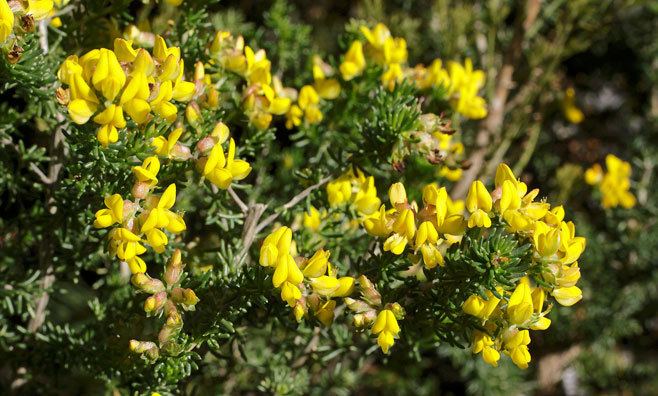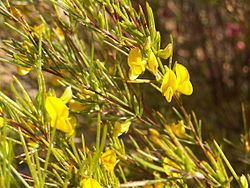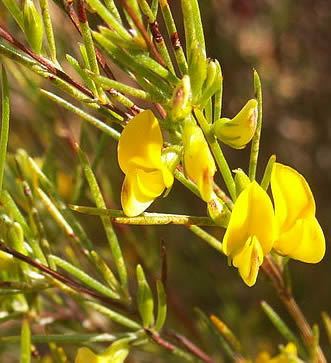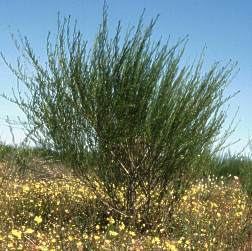Scientific name Aspalathus Rank Genus | ||
Similar Rooibos, Legumes, Cyclopia, Crotalarieae, Lebeckia | ||
Aspalathus is a genus of flowering plants in the legume family, Fabaceae. The yellow flowers and spiny habit of some species have suggested a resemblance to Ulex europaeus, the thorny "English gorse" Accordingly, "Cape Gorse" has been proposed as a common name although the resemblance is largely superficial; for instance, gorse is thorny, whereas Aspalathus species are variously spiny or unarmed. The genus belongs to the sub family Faboideae. There are over 270 species, mainly endemic to southwestern fynbos regions in South Africa, with over fifty occurring on the Cape Peninsula alone. The species Aspalathus linearis is commercially important, being farmed as the source of Rooibos tea.

Aspalathus species generally are shrubs or sometimes shrublets. They typically are bushy, but some species may be sprawling or erect with free-standing branches. The flowers of most species are plentiful in season, a rich, showy yellow very common in the Western Cape mountains in particular. The flowers of some yellow-flowering species (such as Aspalathus cordata) turn bright red as they fade. Some species, such as Aspalathus forbesii have white or cream flowers, and others, such as Aspalathus costulata and Aspalathus cordata have flowers in various shades ranging from pink to pale violet, whereas Aspalathus nigra commonly has slate-blue flowers.
Aspalathus leaves are sessile and are simple in some species, but trifoliate in others. They commonly are fascicled. In some species they bear hard, sharp, spines at their tips. There are no stipules.

Aspalathus species may be grouped into four categories for purposes of rough identification in the field. One group has undivided leaves, never tufted. this includes Rooibos, Aspalathus linearis with it needle-like leaves, and Aspalathus cordata with its stiff, neatly cordate leaves with their aggressively spiny tips, are typical examples. Another group has leaflets sharp, stiff, and acicular. Examples include Aspalathus astroites and Aspalathus chenopoda.

A third group has cylindrical, fleshy leaves, not spiny, for example Aspalathus capitata and Aspalathus pinguis, while members of the fourth group, such as Aspalathus aspalathoides and Aspalathus securifolia have more or less flat leaflets.

The fruit of Aspalathus is a pod, and in the majority of species the ovary has two ovules that yield only one seed per pod. However, some pods are several-seeded.
Various species of Aspalathus have been used in traditional medicines and as "bush teas", including Aspalathus tenuifolia, but it is difficult to know which sources to trust, because many specific names have been changed or confused in the past. Also, many uses were very local, and there was a good deal of confusion between different species, even sometimes with similar genera, such as Cyclopia, some species of which yield honeybush tea.
Species
Aspalathus comprises the following species:
